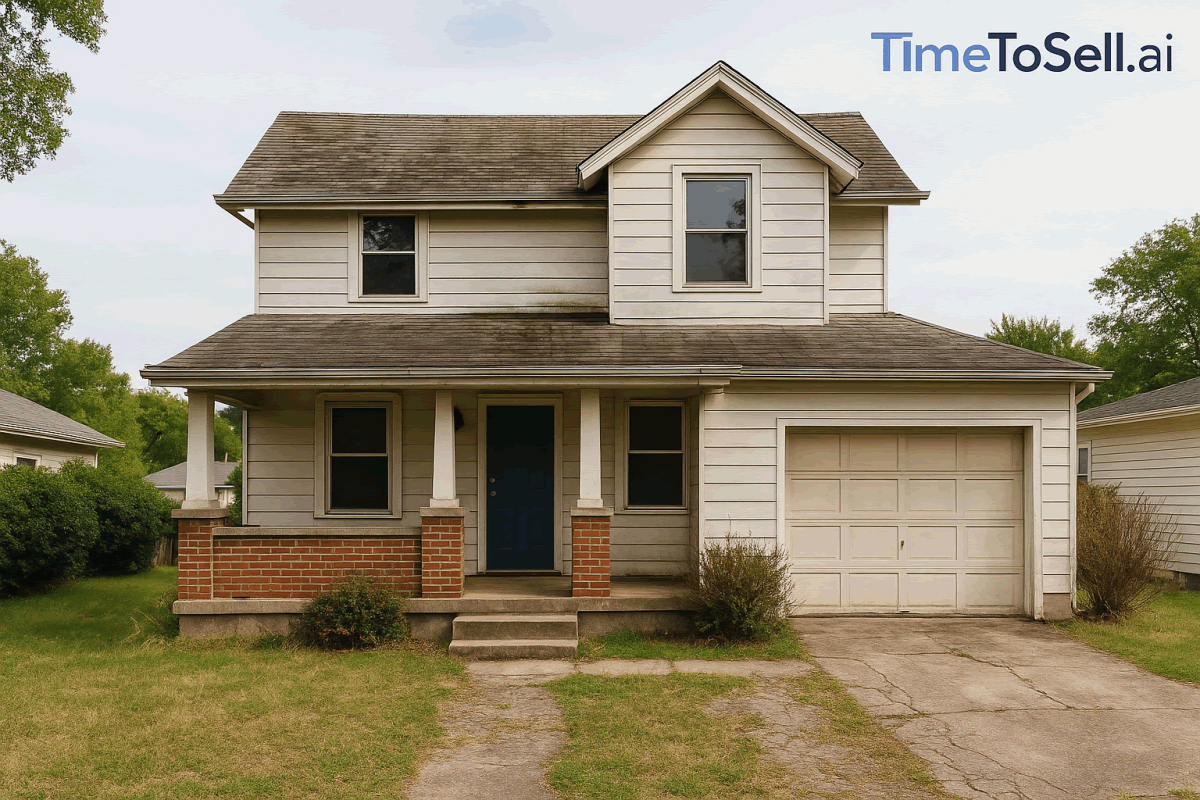A Personal Note from Your AI Home Advisor: The data associated with your property has flagged a potential conflict between the property’s physical characteristics and current insurance underwriting standards in Colorado. This can be a complex and stressful situation. This document is a confidential, data-driven briefing designed to provide a clear, objective framework for analyzing your options and making an informed decision to protect your financial interests.
1. The Invisible Crisis: How a Home Becomes a Liability
For decades, homeowner's insurance was a predictable, stable cost. However, a convergence of factors in Colorado—including increased weather events, rising construction costs, and evolving risk models used by insurance carriers—has created a new and urgent challenge for many long-term homeowners. A property that has been insured for years can suddenly be deemed too high-risk, resulting in a shocking premium increase or, in a growing number of cases, a notice of non-renewal.
This is not a reflection on you as a homeowner. It is the result of a data-driven shift in the insurance industry. This situation creates what is known as an "Uninsurable Property" profile, where the motivation to sell becomes a logistical and financial necessity rather than an emotional choice.
The Data Triggers: What AI and Insurers See
Predictive models identify these properties by detecting a specific combination of high-impact risk factors:
- Roof Age & Material: This is the number one trigger. An asphalt roof over 20 years old, or a wood shake roof of any age, is an immediate red flag for most carriers in Colorado.
- Location in High-Risk Zones: Properties located in areas newly re-classified as high-risk for wildfire (common in the Front Range foothills) or hail (prevalent across the plains) face intense scrutiny.
- Outdated Systems: Older homes with known issues like knob-and-tube electrical wiring or polybutylene plumbing can also be flagged as uninsurable.
When one or more of these data points are present, the property enters a high-risk category. This is a core component of the analysis in the Insurance & HOA Shock Playbook.
2. The Financial Domino Effect: Why This is More Than an Inconvenience
Losing access to affordable homeowner's insurance is not a minor issue; it triggers a cascade of serious financial and legal consequences that every homeowner must understand.
- Violation of Mortgage Covenants: Virtually every mortgage agreement requires the homeowner to maintain continuous property insurance. A lapse in coverage is a technical default on your loan.
- Forced-Place Insurance: If you cannot secure your own policy, your lender will purchase one for you. This "forced-place" insurance is extraordinarily expensive—often 2 to 4 times the cost of a standard policy—and offers minimal coverage. It is designed to protect the lender, not you, and the high cost can create immediate financial strain.
- The Inability to Sell (to a Financed Buyer): This is the most critical consequence. A new buyer cannot obtain a mortgage without first securing their own homeowner's insurance policy. If your property is deemed uninsurable, your pool of potential buyers shrinks to only those who can pay all cash.
- Personal Liability: Without insurance, you are personally exposed to 100% of the financial risk in case of a fire, a flood, or a liability claim.
This domino effect is why an insurance non-renewal notice often creates a non-discretionary, time-sensitive need to act.
3. The Strategic Choice: A Data-Driven Analysis of Your Two Paths
You are at a financial crossroads. Your choice is not simply whether to move; it's a capital allocation decision. Do you make a significant new investment into the property, or do you liquidate the asset and redeploy your equity elsewhere? This is the core framework of the CMA to Commitment strategy.
Path A: The Reinvestment Path (Repair & Retain)
This path involves making the necessary capital expenditures to make the property insurable again. For example, replacing a $30,000 roof.
- The Pros: Allows you to keep your home and resolves the immediate insurance crisis.
- The Cons & Risks:
- Significant Upfront Cost: You must have the liquid capital to fund the repair.
- The Renovation Burden: You must manage the stress and logistics of a major construction project. This can sometimes lead to what is known as "Renovator's Remorse."
- Uncertain ROI: You are unlikely to recoup 100% of the cost of a new roof at resale. You are spending cash to maintain the status quo, not necessarily to increase the home's market value.
Path B: The Redeployment Path (Strategic As-Is Sale)
This path involves selling the property in its current condition to a buyer who is willing and able to take on the needed repairs.
- The Pros:
- No Upfront Cost: You preserve your capital.
- Certainty & Speed: You transfer the problem to a new owner and can often close the sale quickly.
- Equity Liberation: You unlock the substantial equity in your home, which can then be used for your next chapter.
- The Cons & Risks: The sale price will be lower to account for the cost of the needed repairs.
4. Financial Modeling: A Side-by-Side Net Equity Comparison
To make a purely data-driven decision, it is essential to model the net financial outcome of both paths. This is the same methodology detailed in the Equity Math That Converts playbook.
| Line Item | Path A: Repair & Sell Later | Path B: Sell As-Is Now |
|---|---|---|
| Estimated Property Value | $750,000 (after new roof) | $720,000 (current condition) |
| Upfront Renovation Cost | -$30,000 | $0 |
| Carrying Costs (3 months during repair) | -$9,000 (mortgage, tax, insurance) | $0 |
| Costs of Sale (~7%) | -$52,500 | -$50,400 |
| Estimated Net Proceeds | $658,500 | $669,600 |
*Note: These numbers are illustrative. Use your TimeToSell.AI dashboard for a personalized estimate.
As the model shows, even though the final sale price is higher in the renovation scenario, the upfront costs and carrying costs often result in a lower net profit. The "As-Is" path frequently emerges as the financially superior choice, providing a higher net return with zero risk and stress.
5. The Execution Plan: How to Successfully Sell an "As-Is" Property
Selling a home that requires a major repair is a specialized process. A successful outcome depends on a strategy of radical transparency and targeted marketing, a process detailed in the professional Listing Operations Manual.
- Gather the Facts: The first step is to get 2-3 detailed, written quotes from reputable local contractors for the required repair. This is the single most important piece of data you can have.
- Price with Precision: The property should be priced based on its after-repair value, minus the full cost of the repair, plus a small discount for the buyer's inconvenience. For example: `$750,000 (ARV) - $30,000 (Roof) - $10,000 (Inconvenience) = $710,000 (List Price)`.
- Market the Opportunity, Not the Flaw: The marketing should not hide the issue; it should highlight the opportunity. The message is: "Here is a well-located home, priced to reflect the need for a new roof. The seller has already done the due diligence and has bids in hand. This is your chance to get into a great neighborhood and build instant equity."
- Target the Right Buyer Pool: The ideal buyer is often a local investor, a contractor, or a homebuyer using a renovation loan. A skilled agent will have a network of these buyers ready.
This process transforms the problem from an unknown liability into a known, quantifiable project. It removes fear and uncertainty from the buyer's mind, leading to strong, confident offers and a smooth transaction, a key principle of the Fall-Through Prevention Checklist.
A Final Word: An insurance non-renewal can feel like a crisis, but it is a solvable problem. More than that, it is a financial decision point. By analyzing the data objectively, you can turn this challenge into a strategic opportunity to protect and redeploy your home's equity.
To begin your analysis, access your complimentary, confidential TimeToSell.AI dashboard. This will provide you with the baseline valuation and data you need to model your options and make a confident, informed decision.





